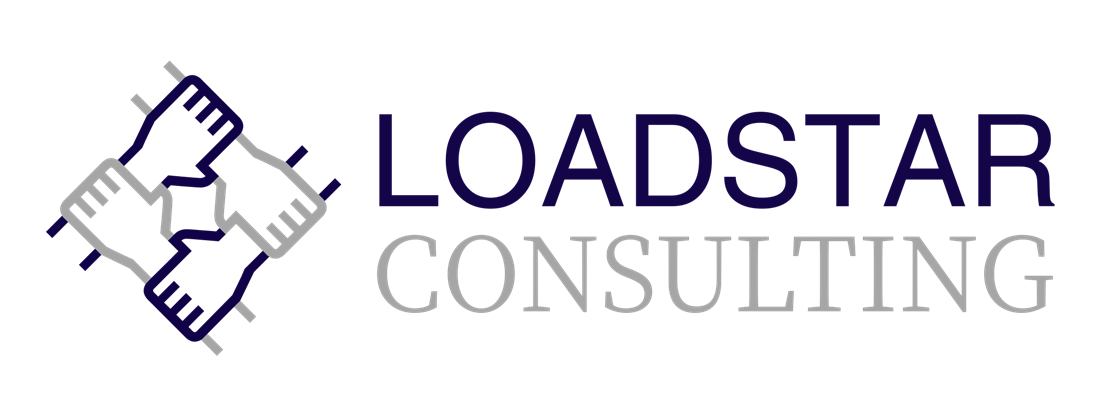Choosing the Right Donor Management System: Cloud-Based vs. On-Premise
November 8, 2024 | 8 min read
Choosing a donor management system can feel daunting. This article explores cloud-based vs. on-premise options—highlighting features, cost, and scalability—to help you choose an infrastructure that fits your nonprofit’s needs.
When you work for a cause, every decision feels personal—especially when it impacts how you connect with donors and manage resources. Picking the right donor management system can feel overwhelming, especially with the number of options available. While there are many factors to consider, such as features, cost, ease of use, integration capabilities, and scalability, one key decision is choosing between a cloud-based or on-premise system. This post presents the advantages and disadvantages of these options to help you make an informed decision that aligns with your unique needs. Topics covered include:
- Cloud-Based System
- On-Premise System
- The Hybrid Option
- Keeping Data Safe (and Yourself Sane)
- What About the Cost?
- Selecting the Right Partner
Cloud-Based System
A cloud-based system is like renting an apartment. You pay a monthly fee, and the landlord handles maintenance, upgrades, and security. If you are part of a nonprofit without a dedicated IT team or a significant budget for technology, a cloud-based system may be for you. They are flexible, easy to set up, and may not require a dedicated IT team to keep them running.
Key Features
- Access Anywhere: The only thing required is an internet connection, and you are good to go—perfect for remote work or when you are on the go.
- Pay-As-You-Go: You usually pay a monthly or yearly subscription instead of significant upfront costs.
- Provider-Managed Maintenance: Software updates, backups, and security? The cloud service provider handles this for you!
- Scalable: If your donor list suddenly doubles, you can scale up with a snap of the finger!
Advantages
- Easy access from anywhere, even if your team is scattered.
- There is a reduction in upfront costs for physical IT infrastructure.
- The provider manages updates, security patches, and backups.
- The system can grow with your organization.
- The system easily integrates with other cloud-based tools like Mailchimp.
Disadvantages
- Requires reliable internet connectivity, which may pose challenges in remote areas.
- Subscription fees may lead to higher long-term costs.
- Your data lives off-site, which could raise privacy concerns, especially with regulations like GDPR.
- You must trust a third party to keep your data safe and systems running smoothly.
- Less flexibility when it comes to customization—sometimes you have to work around the system instead of the system working around you.
On-Premise System
An on-premise system is like owning a home. You are in complete control but also responsible for keeping things running smoothly. Your organization may find that an on-premise system is a better fit if your organization has specific technical needs or values maintaining complete control over your donor data. Although more hands-on, it enables you to build and manage things precisely how you want.
Key Features
- Local Hosting: You own the servers, and the data stays on-site.
- Complete Control: Your organization manages the software, data, and infrastructure.
- Customizable: You can personalize the system to fit your organization’s unique needs.
- One-Time License: You will pay upfront for the software but might face costs for maintenance and upgrades.
- IT Expertise: Someone on your team (or an external contractor) must handle updates, backups, and troubleshooting.
Advantages
- Complete ownership and control of donor data is critical if your organization handles sensitive or regulated information.
- Recurring subscription fees are not eating away at your budget.
- The system may work without an internet connection, so downtime will not stop you!
- Greater flexibility to customize the system to fit your exact needs.
Disadvantages
- You may have to pay significant upfront costs for hardware, software, and IT support.
- Maintaining and upgrading the system is your responsibility.
- Expanding your infrastructure takes time and money (hello, new servers!).
- The system could become outdated quickly if updates are not managed and deployed.
- You must define and implement a solid data backup and disaster recovery plan.
The Hybrid Option
Don’t fret! If neither option feels like a perfect fit, there is a middle ground! A hybrid system lets you combine the best of both worlds. For example, you could keep sensitive donor data on-premise while using the cloud for tools like reporting or analytics. This setup can give you the flexibility and security you need without overcommitting to one model.
The following comparison chart provides a clear overview of the key differences between cloud-based, on-premise, and hybrid systems. It highlights critical aspects such as cost, maintenance, scalability, and security. Whether you are looking for a solution that offers flexibility, complete control, or a balanced approach, you can use the following to help inform your decision-making process in choosing a system that best meets your organization’s needs.
| Aspect | Cloud-Based | On-Premise | Hybrid |
|---|
Aspect | Cloud-Based | On-Premise | Hybrid |
|---|---|---|---|
| Access | Access from anywhere with an internet connection. | Access limited to on-site or VPN setups. | Combines on-premise data security with cloud-based remote access. |
| Compliance | Provider may support regulations like GDPR; trust in the vendor is essential. | Organization handles compliance, ensuring full control over sensitive information. | Hybrid setup allows organizations to balance compliance needs between local and cloud systems. |
| Control | Limited control over data; relies on vendor trust for security and privacy. | Full control over data, beneficial for sensitive or regulated information. | Allows selective control of sensitive data while using cloud for less critical tasks. |
| Cost | Subscription-based, spread over time; higher long-term costs possible. | High upfront costs; lower long-term costs if IT resources are available. | Varies; combines upfront and subscription costs depending on implementation. |
| Customizability | Limited customization; must adapt to the provider’s system. | High customizability to meet unique organizational needs. | Customization is possible but depends on how systems are integrated. |
| Hosting | Data stored off-site on the provider’s servers. | Data hosted locally on organization’s servers. | Combination of cloud and local hosting for specific functions or data. |
| Integration | Seamless integration with other cloud-based tools via APIs. | Integration with other tools may require custom solutions. | Integration complexity varies by setup. |
| IT Expertise | Minimal IT expertise required; managed by provider. | Requires dedicated IT staff or contractors. | Requires IT expertise for on-premise; less for cloud. |
| Maintenance | Provider-managed updates, backups, and security. | Organization-managed updates and security; IT expertise required. | Maintenance responsibilities split between the organization and the cloud provider. |
| Performance | High performance; may experience network latency. | Consistent performance; dependent on local hardware and upkeep. | Balances cloud and local performance depending on usage. |
Keeping Data Safe (and Yourself Sane)
Nonprofits handle sensitive information—names, addresses, donations—and protecting it is non-negotiable. Whether you go cloud-based or on-premise, here is what to look for:
- Encryption: Ensure your data is secure when storing and sending.
- Compliance: Check for features that help you meet regulations like GDPR or HIPAA.
- Access Controls: Limit who can see what. Role-based permissions are your friend!
- Backups: Regardless of who handles the backups, backups are critical to ensuring your mission continues uninterrupted!
What About the Cost?
Budgeting for technical needs is tricky, but here is a simple way to think about it:
- Cloud-based systems spread costs out over time, but subscriptions can add up. Let’s say, for instance, you are paying $300 a month, that is $3,600 a year—$18,000 over five years!
- On-premise systems require a more significant upfront investment, but you might save in the long run if you have existing IT resources. A one-time $10,000 system could be cheaper than years of subscription fees.
Do you have the budget to invest upfront, or does a minor monthly fee work better right now?
Selecting the Right Partner
Choosing the right donor management system is not just about features or costs but also about selecting the right partner who truly understands your mission. Your vendor will be critical in ensuring your system functions smoothly and grows with your organization. Here are some key considerations to keep in mind:
Reputation and Reliability
Your partner must be as reliable as the system they provide. Research their reputation and evaluate their track record using testimonials and case studies. Consider that partners experienced in working with nonprofits often have a deeper understanding of your challenges and can offer tailored solutions.
Security and Compliance
Your organization may handle sensitive donor data, making security a top priority. Verify the vendor follows industry best practices for data security and complies with regulations like GDPR or HIPAA if applicable. Do not hesitate to ask about encryption, access controls, and disaster recovery plans.
Customer Support
A trustworthy partner doesn’t just set up the system and walk away. A true partner has your back! Evaluate their customer support to ensure they will be there when needed. Is help available in your time zone? Do they offer training sessions? Do they have a comprehensive help center? A partner committed to your success is easy to reach and proactive in their support!
Clear and Transparent Contract Terms
Review the contract thoroughly. Take time to understand the pricing structure, service level agreements (SLAs), and termination clauses. Consider duration and flexibility, pricing and payment terms, support and training inclusions, ownership and access, performance guarantees, customization, and scalability. Clear terms build trust and help avoid surprises down the line.
- Are there hidden fees for upgrades or integrations?
- What is the term of the contract, and is it renewable annually, monthly, or longer?
- Can you easily upgrade, downgrade, or cancel your contract if your needs change?
- Are there discounts for nonprofits? Multi-year agreements? Paying upfront?
- Does the contract include onboarding or training services?
- Who owns the data, and what happens with your data when the contract ends?
- Do you retain access to your data after the termination of the agreement?
- What happens if there is a security breach or data loss?
- Does the contract include changes or customizations to the system over time? If so, what are the terms?
- Are there fees associated with early termination or transferring data to another system?
Scalability and Customization
As your organization evolves, your system needs to grow with it. Look for a vendor able to scale with your growing donor base and adapt the system to meet your changing needs. Customization options are essential, allowing you to tailor the system to your unique business needs.
Final Thoughts
Choosing the right system is a big decision that can make a real difference for your nonprofit. It is not just about the technology but also about supporting your mission and the people who make it happen! Think about your organization’s size, processes, budget, and goals. Do you want something plug-and-play, or do you want total control? And remember to revisit your choice as your organization evolves. Regardless of the type of system you choose, the goal is the same: freeing up your time and energy to focus on what matters—making an impact.

